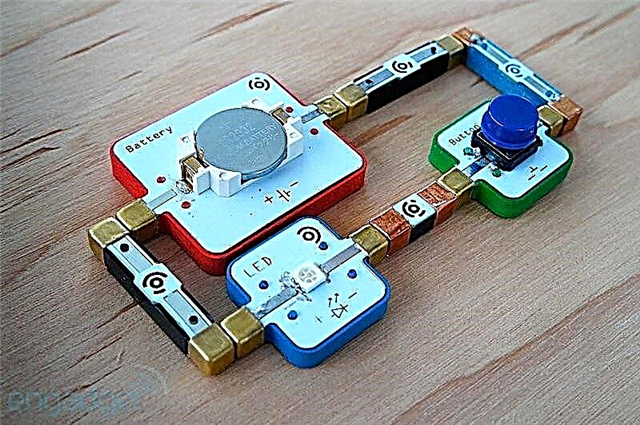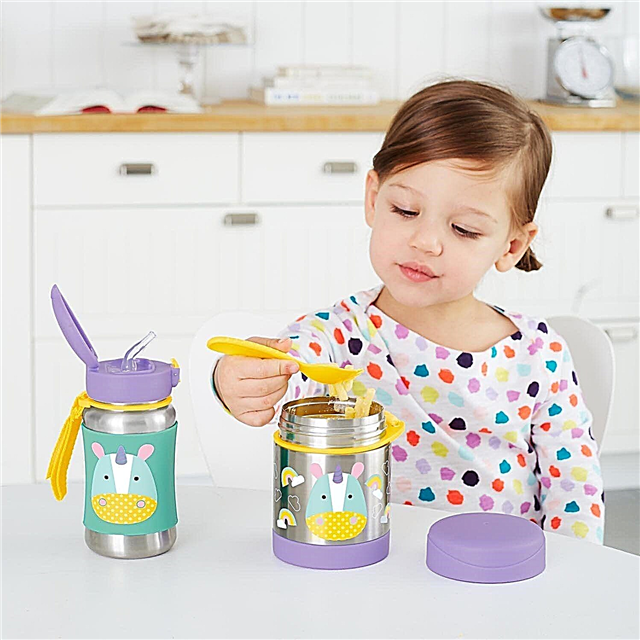
The drug called "Lugol" belongs to the group of antiseptics and is used for local or external treatment. This means treating diseases in the oral cavity and pharynx, as well as skin diseases. The medicine is in demand among adults, but it is often prescribed for children as well. So that it does not harm young patients, it is worth learning more about its features and how to use the drug correctly.

Features:
At the present time, "Lugol" is represented by only one form of release, which is a solution poured into dark glass bottles. These bottles are equipped with a spray nozzle, due to which the medication is applied in the form of a jet onto the mucous membrane / skin by lightly pressing the mechanism.
The liquid itself is viscous and translucent. It has a pronounced iodine odor and a bright reddish brown color, sometimes with an orange tint. The volume of the drug in one bottle differs from manufacturer to manufacturer and can range from 25 to 60 ml.


Composition
The action of "Lugol" is provided by iodine, which is the main ingredient of the spray and is presented in two concentrations - 1% and 1.25%. In a 1% solution, the amount of iodine per gram is 10 mg, and 1 ml of the drug with a concentration of 1.25% contains 12.5 mg of elemental iodine.
Additionally, the preparation contains glycerin so that iodine acts more gently. In addition, Lugol contains potassium iodide and purified water. Such auxiliary ingredients dissolve iodine better.
Operating principle
Molecular iodine present in Lugol has antiseptic properties, since it is capable of destroying various pathogenic bacteria, as well as opportunistic microbes. It also affects disease-causing fungi, including candida. Due to its destructive effect on pathogens, Lugol helps to stop the inflammatory process caused by infection. At the same time, there is no addiction to the drug, which makes it more beneficial than topical antibiotics, and also allows you to use it as long as required.
Note that the spectrum of action on microbial and fungal cells in the drug is very wide - the spray affects a large number of different microorganisms, which makes it possible to use it for almost any infection of the skin or mucous membrane. At the same time, staphylococci have a relative resistance to iodine, although with regular and fairly long-term treatment, "Lugol" is able to destroy such bacteria. But the drug does not work on Pseudomonas aeruginosa.
Molecular iodine also has a local irritating effect. The drug increases mucus production, which can cause sneezing or coughing.

However, this effect is beneficial for infections of the mucous membranes, since, due to the large volume of mucus, pathogenic bacteria are washed off the membrane and die faster under the action of lysozyme and other active substances in the secretion.
It is worth noting that "Lugol" after treatment of the affected tissues is able to be absorbed into the blood. If a small area is smeared with the drug, then the amount of absorbed iodine is not so significant and practically imperceptible. However, when sprayed over a large area of the mucous membrane or skin, the ingestion of iodine into the blood will be large. It is important to consider this also in childhood, when the barrier function of the skin is not yet as strong as in adults.

Indications
Lugol treatment is applied:
- in case of damage by bacteria or other pathogens of the pharynx or oral cavity, for example, with tonsillitis, pharyngitis or laryngitis;
- with purulent otitis externa;
- with boils, suppuration of scratches, erysipelas and other skin infections;
- with wounds on the skin;
- with burns of 1-2 degrees and in case of complications (with their secondary infection).
Is it allowed to use on children?
"Lugol" is often prescribed to children, as it is considered safe by pediatricians in childhood. Usually in pediatric practice, it is used for tonsillitis and pharyngitis, as a drug for the treatment of a sore throat. In our country, it is discharged from birth, although age restrictions can be seen in the instructions for the spray (different manufacturers indicate the age of 5 years or 12 years as contraindications).
The widespread use of "Lugol" in children is associated with long-term observation of the effect of this solution on the child's body. Such a remedy has been prescribed for many decades, and during this period pediatricians became convinced that the medication is effective and harmless. However, there are many pediatricians, including Dr. Komarovsky, who consider this drug obsolete. In their opinion, many more modern local remedies are now being produced, which have fewer contraindications and side effects.
It is also important to note that it is not recommended to spray Lugol at an early age, because the smallest patients cannot hold their breath upon request. For this reason, in infants and toddlers in 2-3 years, it is more advisable to apply the solution with a cotton swab.


Contraindications
Treatment with "Lugol" is prohibited in case of hypersensitivity to iodine or other ingredients of the medicine. If a child has been diagnosed with kidney disease, liver pathology or dermatitis herpetiformis, the solution should be used with caution.
There are also limitations for the treatment with "Lugol" for patients with thyroid diseases, since excess iodine accumulates in this organ. It is not recommended for such children to irrigate large areas. For adults, the drug is not prescribed during the period of gestation and during breastfeeding.

Side effects
The drug can provoke hives and other manifestations of allergies. With too long use, "Lugol" can cause increased lacrimation, acne, rhinitis and other manifestations of the reaction called "iodism".
Some children after treatment with "Lugol" of mucous membranes complain of tingling, burning, sore throat and similar discomfort. They usually go away within a few hours and are associated with the drying and irritating effects of iodine.
If such uncomfortable symptoms bother the child greatly, gargling with a softening herbal decoction, such as chamomile, is recommended. You can also use lozenges or lozenges, which will soften the mucous membrane.

In addition, it is important that the spray does not get into the child's eyes. If this happens by accident, you should immediately rinse the conjunctiva with plenty of clean water.
Instructions for use
The medicine is sprayed on painful and inflamed areas until the patient's condition improves or he fully recovers. The recommended frequency of treatment is four to six times a day.
While holding the bottle upright, the tube is directed to the desired area and the spray is pressed once. This pressing should not be long, because the solution is sprayed not in the form of a cloud, but it is supplied by a stream. If you need to treat a large area or several areas, spray "Lugol" with a few clicks, irrigating the surface in parts.
The moment the spray is sprayed onto the mucous membrane of the mouth or throat, the patient must hold his breath. This will prevent the solution from entering the bronchi.

After applying the product to the affected mucous membrane, you must not eat or drink for at least 30 minutes. During this period, the drug remains on the treated surface and exerts its therapeutic effect.
Lugol can be applied to the skin in different ways. The method of treatment depends on the severity of the inflammation, for example, if the skin is inflamed in a limited area and such inflammation is not very pronounced, then the wound is first cleaned of impurities, after which "Lugol" is sprayed and left for 15-30 minutes for better absorption. Then the skin can be left open or covered with a bandage. This treatment is performed 2-6 times a day until the inflammation completely disappears.
If the infection has affected a large area (more than 5x5 cm) or the course of the disease is severe (the patient has a lot of boils, infected burns, the seam after surgery is inflamed, and so on), then Lugol is moistened with napkins applied to the skin and periodically replaced with new ones.

Overdose
If a small amount of a solution is accidentally swallowed (during throat treatment), usually no problems arise, since iodine will be partially excreted in the urine or transferred by the blood to the thyroid gland, where it will take part in the synthesis of hormones. If the child swallows a large volume of the medicine or the treatment is carried out too often, this can lead to negative symptoms.
For example, excess iodine will irritate the upper respiratory tract, causing bronchospasm or laryngospasm. And also possible burns of the mucous membrane of the oropharynx and bronchi. If a large amount of "Lugol" enters the digestive tract, irritation of the gastrointestinal mucosa may occur. A very large dose of the drug is capable of destroying red blood cells and causing hemoglobinuria.
As soon as an overdose is detected, gastric lavage should be performed immediately and a doctor should be called. To eliminate the negative effect of iodine, sodium thiosulfate is used. This compound is an antidote and is able to bind excess iodine and then remove it from the body.

Interaction with other drugs
Lugol is incompatible with many other drugs. For example, such a solution cannot be used together with ammonia solutions, metal preparations or essential oils. If you treat the skin with Lugol at the same time as other agents that can irritate it, then this side effect will increase.
Terms of sale
Lugol is classified as an over-the-counter medicine, so you can easily buy it at almost any pharmacy. The cost of the drug is influenced by both the volume of the solution in the bottle and the manufacturer. The average price of a 50 ml bottle is 100-110 rubles.

Storage conditions
To prevent molecular iodine in the solution from being destroyed, the drug should be stored in a dark and cool place. If you keep the bottle under the rays of the sun or at temperatures above +40 degrees, the active component will rapidly degrade and the effectiveness of the treatment, accordingly, will decrease. The optimal temperature storage regime for "Lugol" is called the range up to +25 degrees Celsius. The solution usually has a shelf life of 3 years.
Reviews
About 80% of reviews about "Lugol" are positive. In them, the medication is called effective and it is noted that the spray helped to get rid of sore throat and accelerated recovery from acute respiratory infections. The advantages of the funds are called ease of use and low cost, as well as a fairly quick therapeutic effect. Among its shortcomings, the appearance of symptoms of mucosal irritation and an unpleasant taste of the liquid are usually mentioned. Negative reviews talk about side effects, for example, the development of bronchospasm.

Analogs
Other antiseptics, which are produced in the form of a spray, are capable of replacing "Lugol".
- "Jox"... This medicine contains povidone-iodine, supplemented with allantoin, so it not only disinfects, but also accelerates the healing of the throat. In the form of a spray, it can be used from the age of 8.
- "Maxicold Lore". This drug acts on bacteria, fungi and many viruses thanks to hexetidine. It is allowed to be sprayed in the oral cavity of children from 3 years old and can be replaced with other Hexetidine preparations, for example, the Hexoral spray.
- Tantum Verde. The basis of this medicine is benzydamine, which is also present in Oralsept. Both sprays can be used from the age of three and are prescribed for purulent sore throat, stomatitis and other diseases.
- "Hexasprey". This aerosol contains biclotymol and helps to relieve sore throat faster. Children can spray it from the age of 6.
- "Cameton". The action of such a drug is due to a combination of camphor, menthol, chlorobutanol and equaliptic oil. All of these substances help kill germs and reduce the activity of inflammation. In the form of a spray "Kameton" is prescribed from the age of 5.
- Miramistin. Such an antiseptic is allowed at any age. It helps to get rid of fungi, bacteria and viral particles, and also speeds up the regeneration of the mucous membrane. It can be used not only for tonsil hypertrophy, rhinitis, adenoids or stomatitis, but also for various skin lesions, conjunctivitis and many other pathologies.
- "Proposol"... Such a propolis-based medicine can only be used as directed by a doctor, as it can cause an allergic reaction. It is in demand for stomatitis, tonsillitis and other diseases.
See all about the Lugol spray solution in the next video.



